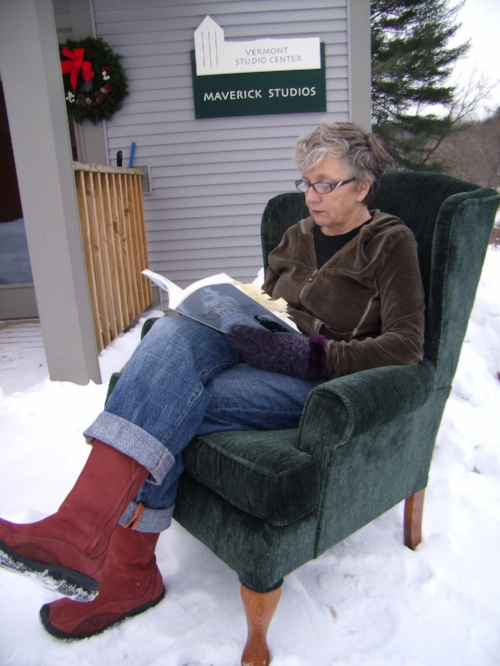The Art of Science—Versailles at the Science Museum, London
Have you ever wondered how it would feel to witness the grandeur and opulence of the 18th-century French court? Then you might want to go to London.
Edoardo Cesarino 19 December 2024
19 October 2023 min Read
Cities of Women, is a new novel by Kathleen B. Jones, published by Keylight Books 2023. It is a fascinating melting pot of real-life tales of medieval artists mixed with the story of a 21st-century academic trying to identify the woman who created one of the finest medieval illuminated manuscripts in the world.
This novel is inspired by the incredible life of the medieval Italian-French writer Christine de Pizan and the mystery woman who illustrated her writings. Using a dual timeline, the author switches between the trials and tribulations of women in medieval France and women in modern-day USA/UK. Each is striving for independent, fulfilled, and passionate lives, against a tide of cultural obstacles, and misogyny. The beauty is that each is assisted by other women. Add in mystery, plague, and a dash of sapphic love, and you have the recipe for a rollicking read.

Kathleen B. Jones, Cities Of Women, Keylight Books, 2023, Front cover.
We begin as modern-day historian Verity Frazier goes on a quest to discover a legendary medieval illustrator, known only as Anastasia. How does one find evidence of women’s lives, which so often went unrecorded? Traditional art histories (in fact all histories) reflect the male genius and little else. To further complicate matters, the commissioning, production methods, and dissemination of illuminated manuscripts were controlled almost exclusively by men.

Quires (folded pages) of an illuminated manuscript. Photograph by Sarah Charles, 2019, Institute of Historical Research, School of Advanced Study, University of London, London, UK.
The truth is that medieval women in convent communities, and later in workshops, produced an astonishing array of manuscripts; books for religious service or private contemplation, literary works, music, maps, charters, and more. However, their names and their lives are lost to us. Anastasia was described by Christine de Pizan as the finest illustrator of her day. But where (and who) was she?

Lamspringe Manuscript, produced by convent women in the 12th century, Bavarian State Library, Munich, Germany.
The reader of Cities of Women is immersed in a rich world, with detailed descriptions of medieval life. This part of the tale is beautifully rendered. The author has clearly done a lot of in-depth research and we really feel we are walking in the shoes of these women. Strangely, the modern-day love story feels less real, less nuanced. To be fair, even the most seasoned writer would find this a difficult prospect – blending an invented modern romance with detailed and impeccable historical research.

Anastasia, Christine de Pizan In Her Study (detail from The Queen’s Manuscript), 1410-1414, British Library, London, UK.
The particular problem? The modern-day characters seem less defined, their relationship is sketchy, and there are behaviors that verge on abusive. Their luxurious travels seem incredibly well funded (hey, we know how much academics make!) and Anastasia seems to be on familiar, first-name terms with every person and institution they visit across Europe. Finally, although we all know sex is notoriously difficult to write, the coy sex scenes read like teen fantasy rather than true lesbian intimacy – no jean zips or buttons here, just two chic-lit women getting it on.

Anastasia, Christine de Pizan Instructs Four Men (detail from The Queen’s Manuscript), 1410-1414, British Library, London, UK.
However, you can actually rattle through the modern parts of the book, and then linger in the vivid detail of the real stars here: the manuscript painters. The chapters following the life of the manuscript illuminators, convent life, and the bustle of medieval Paris are incredibly absorbing. The characters are tenderly drawn and the trauma of their lives is genuinely moving. This is an important story, for women and for art – Christine de Pizan urged women to discover meaning in their lives and believe in their own worth, whatever their background. She was a truly unique figure at that point in history, outspoken in her defense of all women.

A page from Christine de Pizan, Le Livre Des Trois Virtues, c. 1405, Boston Public Library, Boston, MA, USA.
Pizan completed her most famous book, City of Ladies, in 1405. The book itself is a “city”, peopled by wonderful (and often famous) women. Each woman is a building block for the city’s walls, roofs, and houses, each a valued participant. City of Ladies is an early feminist masterpiece. Calling for justice, equality, respect, and education, Pizan’s message is as valid today as it was all those centuries ago. Pizan quite rightfully gets a place at the dinner table in Judy Chicago’s iconic feminist 1979 artwork The Dinner Party.

Kathleen B. Jones, author of Cities of Women. Author’s website.
This is a novel, not a reference book, but manuscript illustrations would have made this book sing. The cover is eye-catching and beautiful. If you like historical fiction, or if you are interested in medieval illuminated manuscripts, then this is a must-buy. Christine, Beatrice, and their city of ladies will linger with me forever.
DailyArt Magazine needs your support. Every contribution, however big or small, is very valuable for our future. Thanks to it, we will be able to sustain and grow the Magazine. Thank you for your help!